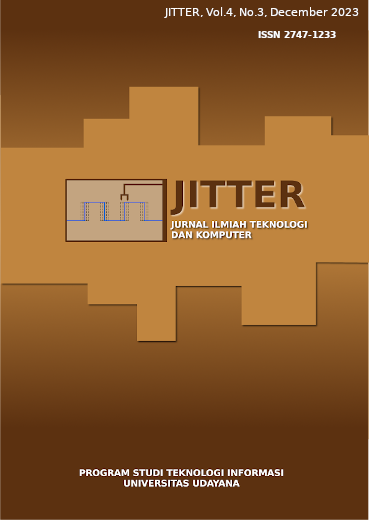Sentiment Analysis of Domestic Violence Issues on Twitter Using Multinomial Naïve Bayes and Support Vector Machine
Abstract
Cases of domestic violence (KDRT) always attract numerous public comments on Twitter's social media platform. This research aims to conduct a sentiment analysis classification regarding ongoing cases of KDRT on Twitter. The study employs the Multinomial Naive Bayes and SVM algorithms to test accuracy in classifying tweets. The research methodology includes the following steps: data collection from Twitter, data preprocessing, sentiment analysis, sentiment classification using SVM and Multinomial Naïve Bayes algorithms, and analysis of results from both algorithms. The research findings indicate that the SVM algorithm achieves the highest accuracy rate, reaching 73% at an 80:20 ratio. In comparison, the Multinomial Naïve Bayes algorithm attains an accuracy rate of 70% at the same ratio. Therefore, it can be concluded that the SVM algorithm exhibits better accuracy compared to the Multinomial Naïve Bayes algorithm.
References
[2] G. Vinodhini and R. Chandrasekaran, "Sentiment Analysis and Opinion Mining: A Survey," International Journal of Advanced Research in Computer Science and Software Engineering, 2012.
[3] F. V. Sari and A. Wibowo, "Analisis Sentimen Pelanggan Toko Online JD.ID Menggunakan Metode Naive Bayes Classifier Berbasis Konversi Ikon Emoji," Jurnal Simetris, 2019.
[4] F. Maylani, Sriyanto and Nosiel, "Implementasi Metode Data Mining untuk Memprediksi Warna Anak Kucing Pada Proses Pengembangbiakan Kucing Ras Menggunakan Algoritma SVM.," Seminar Nasional Hasil Penelitian dan Pengabdian Masyarakat, 2021.
[5] A. Beri, "Analisis Sentimental Menggunakan Vader," Medium, 28 May 2020. [Online]. Available: https://towardsdatascience.com/sentimental-analysis-using-vader-a3415fef7664. [Accessed 2023].
[6] N. Wardhani, Rezkiani and dkk, "Sentiment Analysis Article News Coordinator Minister of Maritime Affairs Using Algorithm Naive Bayes and Support Vector Machine with Particle Swarm Optimization," Journal of Theoretical and Applied Information Technology, 2018.




